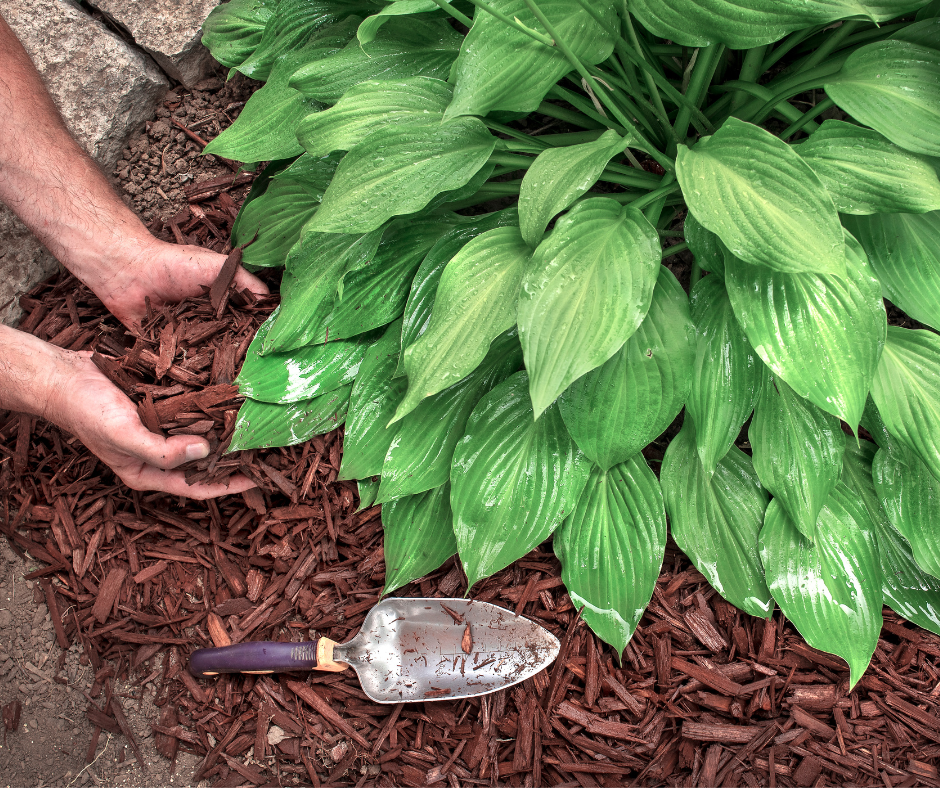 As the reds and golds of autumn leaves fade in North Texas, a slight chill whispers through the air—a reminder that winter isn’t far behind. Here in the Dallas-Fort Worth area, the average first freeze typically arrives around November 22, but with climate variability, it could sneak up as early as November 4. If you’re like many homeowners, your yard is a blend of carefully tended trees, shrubs, perennials, and flower beds. But without proper preparation, those late fall frosts can turn your lush landscape into a casualty of the season. Enter mulch: the unsung hero of winter protection. Mulching isn’t just about aesthetics; it’s a strategic shield that insulates roots, conserves moisture, and sets the stage for a thriving spring rebound.
As the reds and golds of autumn leaves fade in North Texas, a slight chill whispers through the air—a reminder that winter isn’t far behind. Here in the Dallas-Fort Worth area, the average first freeze typically arrives around November 22, but with climate variability, it could sneak up as early as November 4. If you’re like many homeowners, your yard is a blend of carefully tended trees, shrubs, perennials, and flower beds. But without proper preparation, those late fall frosts can turn your lush landscape into a casualty of the season. Enter mulch: the unsung hero of winter protection. Mulching isn’t just about aesthetics; it’s a strategic shield that insulates roots, conserves moisture, and sets the stage for a thriving spring rebound.
At Fallas Landscape, we’ve helped countless North Texas residents fortify their yards against the unpredictable freezes that define our mild winters. In this guide, we’ll demystify mulch mastery, from selecting the perfect type to application techniques that maximize protection. Whether you’re a seasoned gardener or a novice with a new sod installation, these tips will ensure your landscape weathers the cold like a pro.
Why Mulch Matters in Late Fall for North Texas Yards
North Texas winters are a unique beast—rarely dipping into deep freezes but prone to sudden snaps that stress plant roots. Soil temperatures can plummet 10-15 degrees below air temps during a frost, risking heave (where thawing and refreezing cycles push roots out of the ground) or desiccation from dry winds. Mulch acts as a thermal blanket, moderating these swings by trapping heat from the soil and slowing heat loss at night.
Timing is crucial: Apply mulch in late fall, after the first light frost but before the ground fully hardens—right around now, in late October. This allows beneficial microbes in the soil to keep working while giving plants time to harden off. A 2-4 inch layer can raise root zone temperatures by up to 10 degrees, preventing damage to tender species like azaleas, salvia, or young crepe myrtles. Plus, in our clay-heavy soils, mulch helps retain the precious rainfall we get in fall, reducing winter watering needs.
Choosing the Best Mulch for Your Texas Landscape
Not all mulches are created equal, especially in our hot, humid climate where fungal issues and termite risks lurk. Opt for organic options that break down over time, enriching the alkaline Texas soil. Here’s a breakdown of top choices:
- Native Hardwood Mulch: Sourced from local oaks and pecans, this shredded bark holds moisture like a champ during dry spells and decomposes slowly to add nutrients. It’s weed-suppressing and provides excellent insulation without matting down. Ideal for beds around trees and shrubs.
- Pine Bark Mulch: Long-lasting and slightly acidic, it counters our high-pH soils, benefiting acid-lovers like hollies or gardenias. Its chunky texture allows air flow, reducing rot risks in our occasional wet winters.
- Shredded Hardwood or Cedar Chips: These offer durability and a fresh, aromatic scent that deters pests. Cedar is particularly termite-resistant, a boon in North Texas where these wood-munchers thrive year-round.
Steer clear of inorganic mulches like rocks or rubber—they don’t insulate well and can heat up excessively in our spring sun, stressing roots. For eco-conscious yards, recycled yard waste or leaves from your own trees make a free, sustainable alternative. Whichever you choose, source from reputable suppliers to avoid treated wood that could leach chemicals.
Step-by-Step: Mastering Mulch Application
Ready to roll up your sleeves? Proper application is key to reaping the rewards. Here’s how to do it:
- Prep the Area: Rake away debris, weeds, and old mulch. Water the soil lightly a day before to settle it—damp roots are less prone to freeze damage.
- Layer It Right: Spread 2-4 inches evenly over the root zone, extending to the drip line for trees (that’s the edge of the canopy). For perennials, a 3-inch blanket suffices. Pro tip: Use a pitchfork for uniform coverage and avoid volcano mulching—piling it against trunks invites rot and pests.
- Edge for Perfection: Create a clean border with edging stones or metal to keep mulch in place against our gusty northers.
- Enhance Protection: For extra-vulnerable plants like tropicals overwintered in pots, top with breathable frost cloth over the mulch during predicted hard freezes below 28°F.
The whole process for a medium yard? Just 2-3 hours. And remember, less is more—over-mulching (more than 4 inches) can suffocate roots.
The Ripple Effects: Benefits Beyond Frost Defense
Mulch mastery isn’t a one-trick pony. In North Texas, where water restrictions are common, it slashes evaporation by up to 70%, keeping your landscape hydrated with less effort. It suppresses weeds that compete for nutrients, potentially cutting your weeding time in half. As it decomposes, it feeds soil organisms, fostering healthier, more resilient plants that bloom brighter come March.
Environmentally, organic mulches reduce runoff into our urban creeks and promote biodiversity—think earthworms aerating your lawn naturally. Over time, you’ll notice fewer diseases and a more vibrant ecosystem, aligning perfectly with sustainable practices we champion at Fallas Landscape.
Pitfalls to Sidestep for Lasting Success
Even pros slip up sometimes. Common blunders include applying too early (before soil cools, trapping heat and spurring late growth) or too late (after freezes begin, missing the insulation window). Don’t skimp on quality—dyed mulches may look snazzy but can fade and introduce toxins. And always refresh annually; by spring, it’ll have compacted to half its depth.
Wrap Up Your Yard in Winter Wellness
As the sun sets earlier and the mercury dips, embracing mulch mastery is your ticket to a frost-proof, future-proof Texas yard. With the right materials and techniques, you’ll not only shield against late fall chills but cultivate a landscape that thrives year-round. At Fallas Landscape, we’re passionate about transforming North Texas properties into resilient retreats. Ready to mulch like a master? Contact our team today for a free consultation or professional installation—your yard will thank you come spring.

